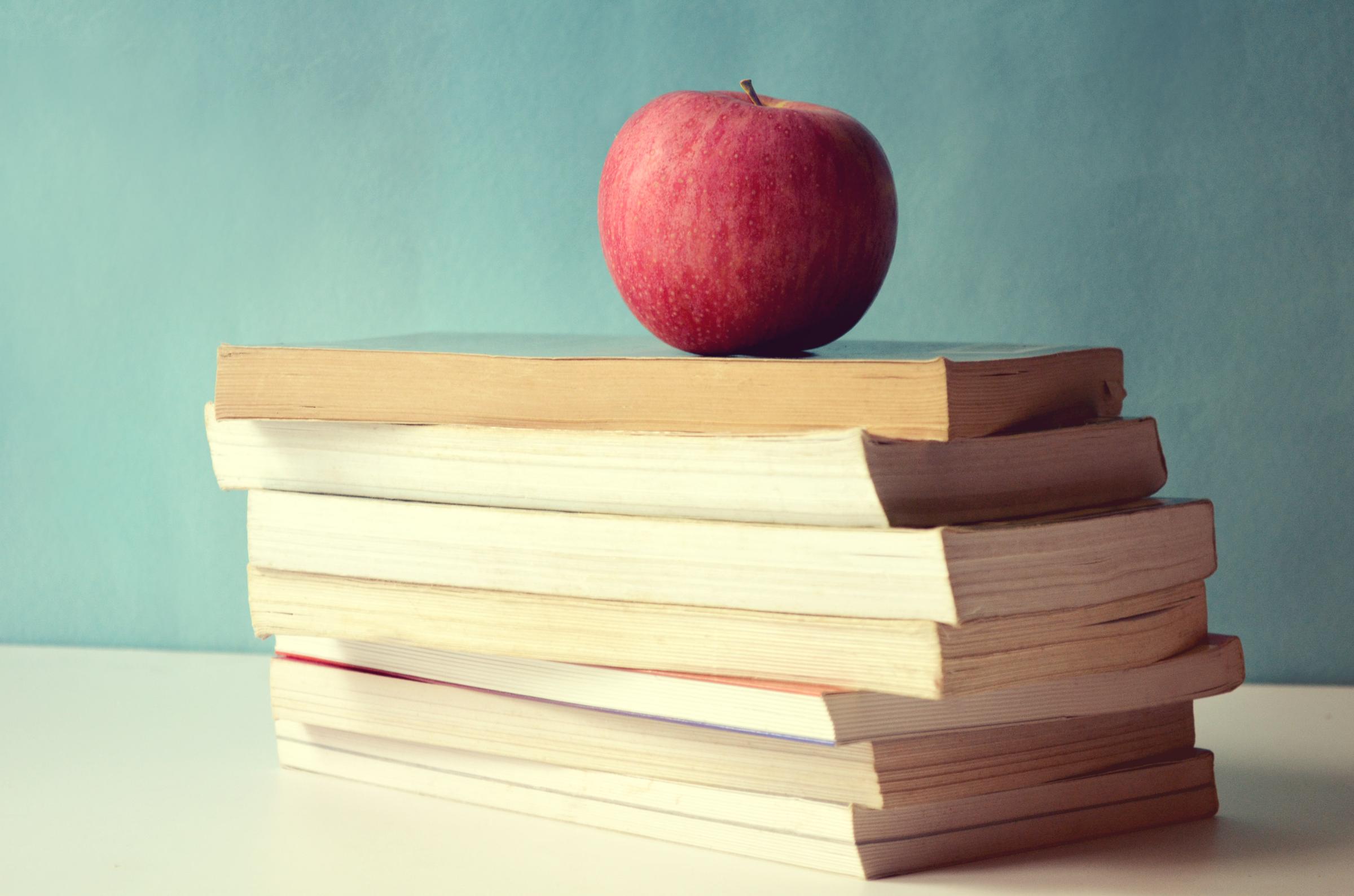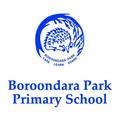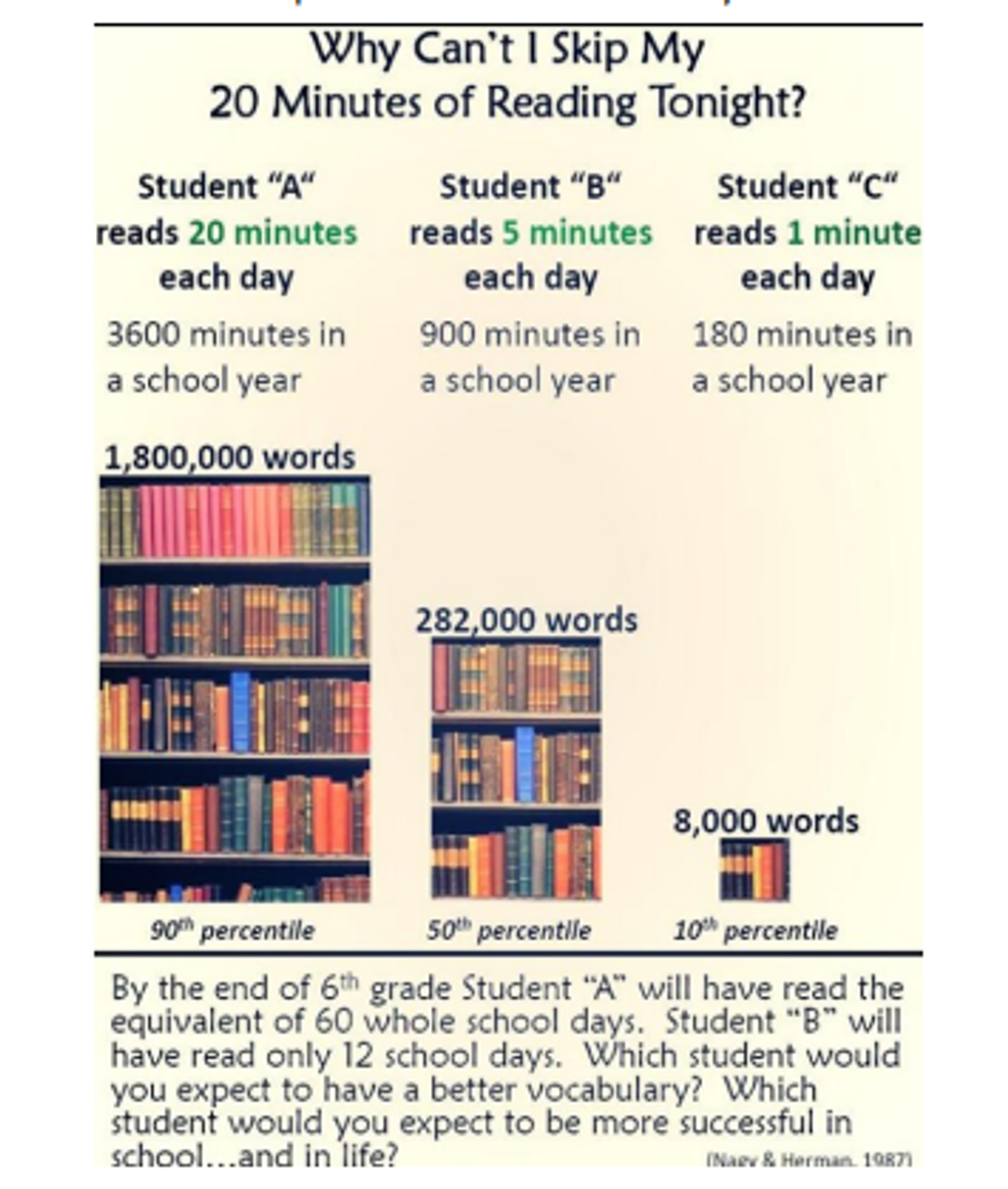Curriculum News

Literacy - The importance of Reading
An interesting fact I found out recently was that on average students add 2000 to 3000 new words a year to their vocabulary. Repeated encounters with words in rich oral and written situations gives experiences and clues to the word’s meaning that build over time and help develop word meaning.
The diagram below gives you an idea of how important it is to read each day.
Good Readers use a range of information to make meaning. They:
- Use knowledge of how our language is spoken (structure).
- Refer to previous experiences and understanding of the text (meaning).
- Use their knowledge of letters and sounds and how they are represented in print (visual).
Some ideas to support your children with reading are as follows:
- Be positive and encouraging. Praise all efforts: for having a go, self correcting, correcting after a prompt, reading a sentence, paragraph or page correctly.
- Prepare them for the task of reading by browsing through the book first.
- Allow them to look at pictures to assist them with making meaning.
- Let them to talk about the text.
- Reread sentences to consolidate and clarify the meaning.
- Allow them to read on if they don’t know a word and they can then come back and reread.
- Give them time to decode and work out for themselves what unknown words are. Wait for five seconds or until the end of the sentence before offering help.
Home Reading Books
Home reading books sent home by the teacher are meant to be at a level that give a child practice at their reading skills. They are meant to be relatively easy, so that fluency and self-correcting can be a natural part of reading aloud at home.
An important thing to understand about ‘reading’ is there are different parts to it. Decoding is being able to see letters of the alphabet, attach a sound to those letters and ‘say the words’. Many students at BPPS are becoming very good ‘decoders’. They recognize many common words, they run words together in phrases and they pause at full stops, so that the reading aloud sounds great. It is exciting to listen to your child read aloud when they are doing all those things.
However, ‘reading’ is not just about saying the words on each page as quickly as you can, then closing the book and saying “done!” Another important part of really reading is understanding or comprehending what they have read. For this to happen, it is important to talk about what they have read and to think about what is happening in a story while they are reading and to reflect on it at the end. This is where parents can support their children at home. When your child reads aloud to you, ask them questions to get them thinking about what they have read. Books and reading provide wonderful opportunities to learn all sorts of life lessons. The actions and choices of characters, both good and bad, are great discussion points about ways to treat other people and how the world works.
There are different kinds of questions you can ask your child during and after reading to help guide their understanding.
-Questions to find answers that are directly stated in the book could start with: What happened …? How many …? How did …? Who …? What is …? Which …?
-Questions to think a little more deeply and start to ‘read between the lines’ by thinking about what the author is telling us may include: Why did …? What was …? What do you think about …? Can you explain …? How was this similar to …?
-Questions to think more deeply about what they are reading by discussing that they think, feel and wonder about what they read: How would you …? Do you agree …? What would have happened if …? What effect does …? If you were …? What would you …?
From time to time your child may bring the same reader home. Children can benefit greatly from re-reading the same book. When re-reading a book, think about what they could have missed the first time they read it. Look at the illustrations, characters facial expressions and ask them what they could be thinking.
Other questions you could ask are: How does the setting make you feel? Can you show me where in the story you felt this? Do you feel differently about the setting or the story now that we have read it again? How has the character changed? Could you show me the page that this took place?
When re-reading a book look at the punctuation that is presented in the book. If it’s a question mark ask what does it mean? When would we use it? If it’s a full stop, again ask what does it mean? Why do we need to stop when we read? If it’s a comma ask what do we do here? Why do we need to take a breath when reading? Sight Words/Letter & Sounds – when re-reading a book look at the common sight words that occur throughout the book. Ask how many ‘the/and/get/to’ you can find? With the letters and sounds ask them to find a certain letter and sound.
Importantly, children need role models of what ‘good readers’ do too. Reading a picture story book or novel aloud to your child, and pausing, ‘thinking aloud’, making predictions and posing ‘I wonder if …?’ type wonderings helps your child see what good readers do. They stop, think and reflect on what is happening as they read. As a parent, you can have a big effect on how your child perceives reading – do they see you reading for pleasure as well as to find an answer to a question you have? Have you read aloud to them your favourite books from when you were their age? Catching a loved ones’ enthusiasm for reading rubs off!
Compiled by Shannon Reeve

